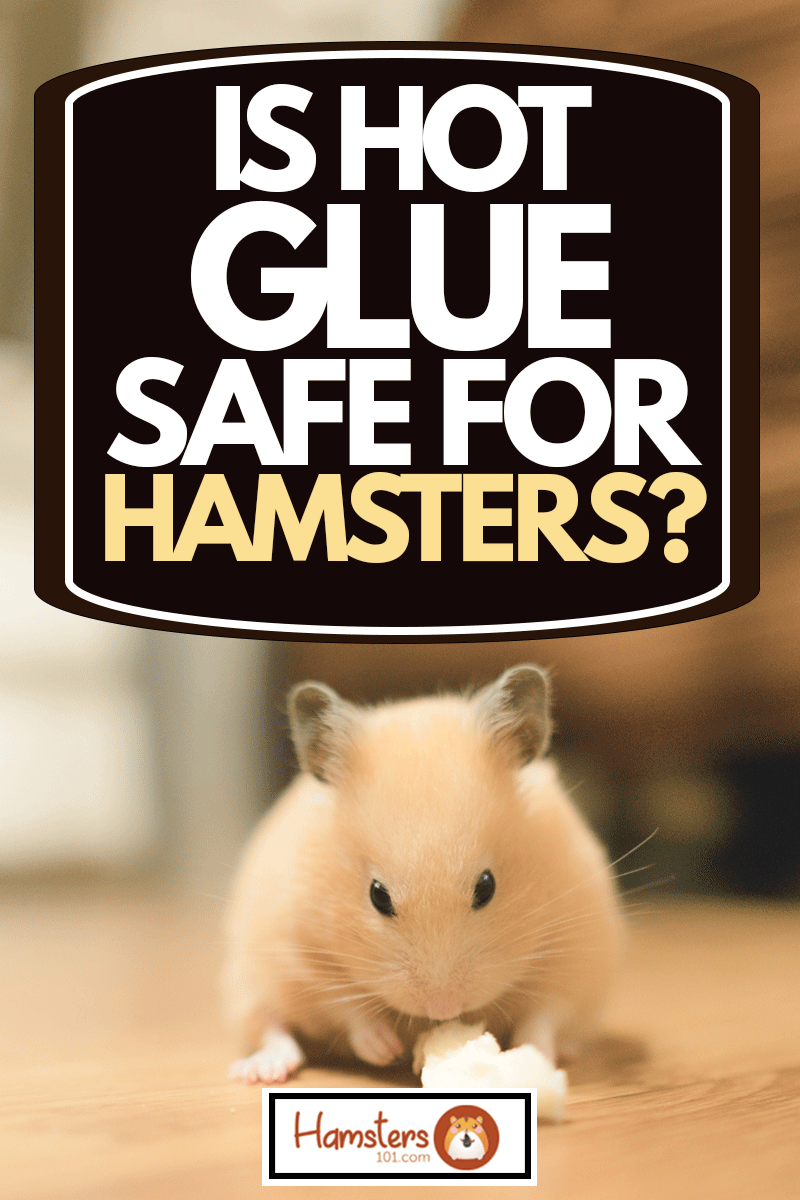If you’re wondering what wood glue is safe for hamsters, look no further! We’ve got the answers you need to keep your furry friend happy and healthy. Hamsters love to chew and explore, and providing them with safe materials is essential. In this article, we’ll discuss the best wood glues that are non-toxic and suitable for your hamster’s habitat.
When it comes to choosing the right wood glue, you want to make sure it’s safe for your hamster if they happen to come into contact with it. Some wood glues contain harmful chemicals or toxins that can be dangerous for small animals like hamsters. Fortunately, there are wood glues specifically designed to be pet-safe and non-toxic.
One of the safest options is non-toxic PVA (polyvinyl acetate) glue. This type of glue is commonly used in woodworking and is considered safe for hamsters. PVA glue dries clear, is water-based, and doesn’t release harmful fumes. It’s important to allow the glue to fully dry and cure before introducing it to your hamster’s habitat.

What Wood Glue is Safe for Hamsters?
Understanding the Importance of Safe Wood Glue for Hamsters
Wood glue is an essential component of many DIY projects and home repairs. However, when it comes to using wood glue in relation to hamsters, special care must be taken to ensure their safety. Hamsters are small and curious creatures, often chewing on anything they can get their paws on. Therefore, using the wrong type of wood glue may have serious consequences on their health. In this article, we will discuss the importance of using safe wood glue for hamsters, the potential dangers of toxic glues, and the criteria for selecting a suitable wood glue.
The safety of wood glue for hamsters lies in its composition. Certain types of wood glue contain toxic chemicals, such as formaldehyde or solvents, which can pose a risk to your hamster’s health if ingested. When hamsters chew on their cage or toys, they may come into contact with the wood glue. Ingesting toxic glue can lead to gastrointestinal issues, respiratory problems, or even poisoning. That’s why it is crucial to choose a wood glue that is specifically labeled safe for animals.
When selecting a wood glue for your hamster’s cage or toys, there are a few key factors to consider. Firstly, opt for a glue that is specifically labeled as safe for animals. Look for glues that do not contain harmful chemicals like formaldehyde, toluene, or xylene. These toxic substances can be hazardous for your hamster’s overall health. Secondly, consider the adhesive properties of the wood glue. It should be strong enough to securely bond wood pieces, ensuring the long-lasting stability of your hamster’s cage or toys. Lastly, choose a glue that is easy to clean up and does not emit strong fumes, ensuring a safe and odorless environment for your furry friend.
The Safest Wood Glue Options for Hamsters
When it comes to selecting a wood glue that is safe for hamsters, there are a few options available in the market. These glues have been specifically formulated with non-toxic ingredients, making them suitable for use around small animals.
1. Non-toxic PVA glue: Polyvinyl acetate (PVA) glue is a popular choice for hamster owners due to its non-toxic composition. PVA glue is water-based, which means it does not contain harmful chemicals. It provides a strong bond and is easy to clean up with water. Look for PVA glues that are labeled as “non-toxic” or “safe for animals.”
2. Food-safe wood glue: Another option to consider is food-safe wood glue, which is specifically designed for applications involving kitchen utensils or food containers. These glues are formulated to be non-toxic and safe for prolonged contact with food. Since hamsters often nibble on their surroundings, using a food-safe wood glue can provide an extra layer of reassurance.
3. Natural or organic glue: Some companies offer natural or organic wood glue options made from plant-based ingredients. These glues are typically non-toxic and are safe for animals. However, it is important to carefully read the ingredients list and ensure that no harmful substances are present.
It is important to note that even with these safe wood glue options, it is best to minimize your hamster’s exposure to the glue by allowing ample drying time before introducing the cage or toys back into their habitat. This ensures that any remaining fumes or residue have dissipated, reducing the risk of ingestion or inhalation.
Tips for Safe Use of Wood Glue around Hamsters
In addition to selecting a safe wood glue, there are a few tips to keep in mind when using it around your hamster:
1. Allow for proper drying time: Ensure that the glue is completely dry and cured before reintroducing the cage or toys to your hamster’s habitat. This helps minimize the chances of your hamster coming into contact with the glue.
2. Apply the glue in well-ventilated areas: When using wood glue, make sure you are in a well-ventilated space. This helps to disperse any fumes and reduces the chance of your hamster inhaling them.
3. Monitor your hamster’s behavior: Keep an eye on your hamster after introducing any glued items or newly repaired cages. If you notice any unusual behavior, such as excessive chewing or discomfort, remove the item immediately and consult a veterinarian.
In conclusion, selecting the right wood glue for your hamster is vital to ensuring their safety. Opt for glues that are labeled as non-toxic or safe for animals, such as non-toxic PVA glue, food-safe wood glue, or natural/organic glue options. Additionally, follow proper usage guidelines and allow for ample drying time to minimize your hamster’s exposure to the glue. By taking these precautions, you can create a safe and enjoyable environment for your furry friend.
Key Takeaways: What Wood Glue Is Safe for Hamsters?
- Try to avoid using wood glue for hamster cages, as it may contain harmful chemicals.
- Look for non-toxic, water-based wood glues that do not contain any solvents or additives.
- Brands like Titebond and Elmer’s offer safe wood glues suitable for hamster habitats.
- Before using wood glue, ensure it has fully dried and cured to avoid any potential harm to your hamster.
- Consult with a veterinarian or a pet expert to ensure the wood glue you choose is safe for your hamster.
Frequently Asked Questions
Wood glue is a common adhesive used in woodworking projects. However, when it comes to using wood glue around hamsters, it’s essential to ensure the safety of your furry friend. Here are some frequently asked questions about using wood glue around hamsters:
Q: Is there a wood glue that is safe to use around hamsters?
A: There are a few wood glues that are considered safe for use around hamsters. Look for glue brands that are labeled as non-toxic and solvent-free. These types of wood glues are generally safer for small animals like hamsters. It’s crucial to carefully read the product labels or do some research to find the best options available.
When using wood glue near your hamster, it’s always a good idea to keep your pet in a separate, well-ventilated area until the glue has fully dried. This will help prevent your hamster from inhaling any potentially harmful fumes.
Q: Why is it important to use safe wood glue around hamsters?
A: Hamsters have a keen sense of smell and are sensitive to certain chemicals and fumes. Using wood glue that is not safe around them may cause respiratory issues or other health problems. It’s important to prioritize the well-being of your hamster and choose an adhesive that is safe for their environment.
Additionally, hamsters are known to chew on various objects, including wood. If the wood glue is toxic, it could pose a danger if your hamster ingests it. By using a safe wood glue, you minimize the risk of harm to your furry friend.
Q: Can I use regular wood glue if I keep my hamster away during the drying process?
A: While keeping your hamster away during the drying process is a good precaution, it’s still best to avoid using regular wood glue around hamsters. Regular wood glues often contain chemicals and solvents that may be harmful to your pet, even after they have dried. It’s better to opt for a wood glue specifically labeled as safe for small animals.
Remember that hamsters are curious creatures and may explore their surroundings, including dried glue. It’s always safer to choose a wood glue that is explicitly designed to be non-toxic and safe for small animals.
Q: Are there any alternative adhesives I can use instead of wood glue around hamsters?
A: If you’re concerned about using wood glue around your hamster, there are alternative adhesives you can consider. Non-toxic and pet-safe adhesives, such as food-grade glues or animal-friendly bonders, can be suitable alternatives for smaller woodworking projects involving hamsters. Always read the product labels and seek advice from your local pet store to ensure the adhesive you choose is safe for your furry friend.
It’s important to note that some materials, like certain types of untreated wood, may not require adhesive for assembly. Exploring options like interlocking joints or utilizing safe, natural bonding methods can also be considered for small woodworking projects involving hamsters.
Q: Can wood glue be harmful to hamsters if they chew on it?
A: If a hamster were to chew on wood glue, there is a potential risk of toxicity or digestive issues. Even if the glue is safe when fully dried, ingestion of any foreign substance can be harmful to small animals like hamsters. It’s essential to keep your hamster away from dried glue and provide them with plenty of appropriate chew toys to satisfy their natural urge to gnaw on items.
Always monitor your hamster closely and ensure they have a safe and enriching environment to discourage them from chewing on inappropriate substances. Promptly remove any access to dried glue or other potentially dangerous materials that they may encounter.

Summary
If you have a hamster and need to use wood glue, it’s crucial to choose a safe option. Regular wood glue is not safe for hamsters because it contains chemicals that can harm them if ingested. Fortunately, there are hamster-safe wood glues available, like PVA glues that are non-toxic and water-based. These glues are safe for your furry friend and can be used for making toys, houses, and other hamster accessories.
Remember, when using any type of glue, it’s essential to let it fully dry and air out before allowing your hamster near it. Always check the ingredients and look for non-toxic, water-based options to ensure the safety of your hamster. With the right wood glue, you can keep your hamster happy and safe while enjoying their new toys and habitats.
